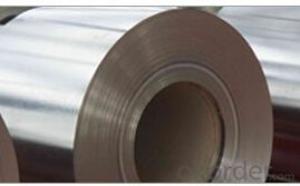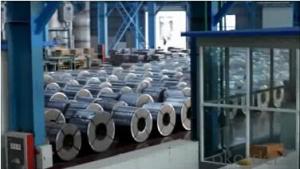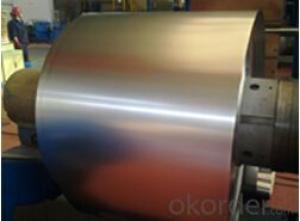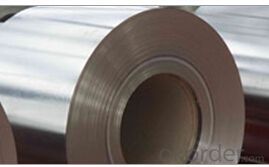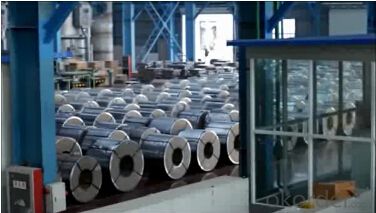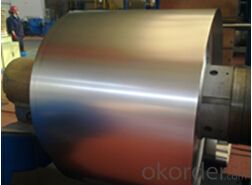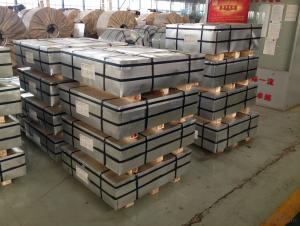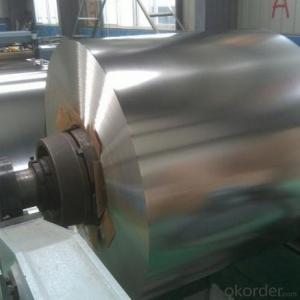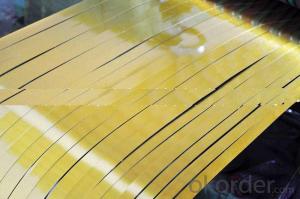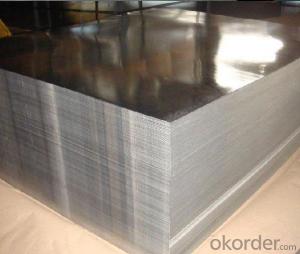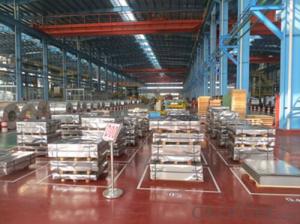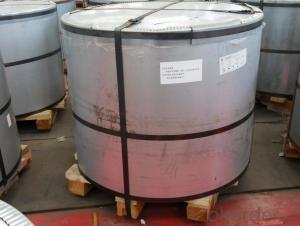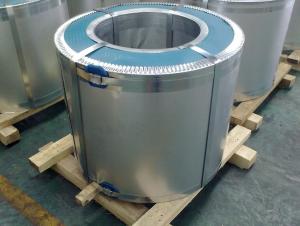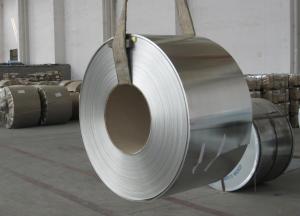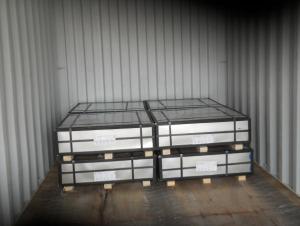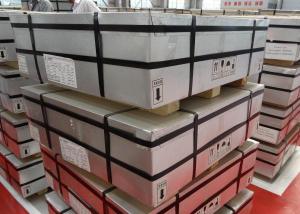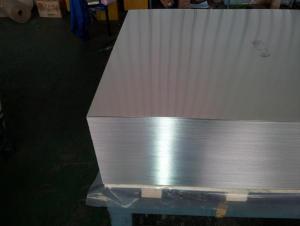Prime Tinplates Sheets for Food Cans Use
- Loading Port:
- Shanghai
- Payment Terms:
- TT OR LC
- Min Order Qty:
- 25 m.t.
- Supply Capability:
- 1000 m.t./month
OKorder Service Pledge
OKorder Financial Service
You Might Also Like
1.Structure Description
Electrolytic Tinplate Sheets is one of the metal packing materials, which is widely used for making painting cans ,chemical package cans , electrical cable ,battery and metal printing etc.
2. Main Features
Steady and high quality
Fast shipment
Good experience for export work
For the surface, Plate uniform in thickness,uniform and smooth tin coating, without flaws,rusts,scratch,wave,nick of tin coating etc.
Price competitive
3.Images
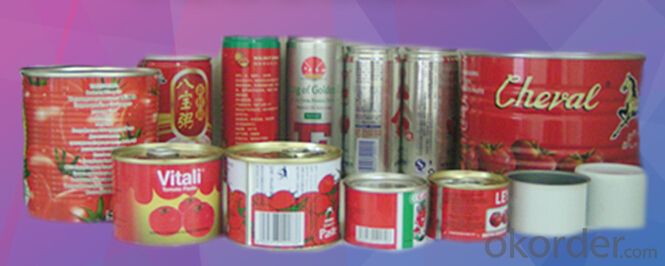
4. Specification
Standard : GB2520-2000 ,JIS G3303
Steel type : SPCC,MR
Coating : 2.8/2.8
Surface: Bright, Stone ,
Thickness:0.18
Width :600MM~1000MM
Temper : T1~T5,DR8
Package: tinplate wrapped completely with an inner cover of plastic or waterproof papers with vorners protected with metal angels.
5.FAQ
A. What is the package of tinplate? (Referred as below)
For sheets, thin plastic film + rust-proof paper + metallic cover + metallic angles+ steel band strips + fumigated wooden pallet.
For coil, thin plastic film + rust proof paper + metallic cover + steel band strips + fumigated wooden pallet
B. The surface of tinplate could you supply?
Stone finish, Bright finish, Matte finish, Silver finish
C. What quantity is the minimum order of tinplate?
Usually, the minimum quantity is 25MT. For special case, consult with us.
D. Can it make to be BA or CA for annealing?
Yes, both can do with.
E.Do you have other tin coating?
Yes, we can do with E2.8/2.8, E5.6/5.6,D2.8/5.6 etc.
- Q: What kind of material is tinplate?
- Tin is mainly used to prevent corrosion and rust. It will be the steel strength and formability and corrosion resistance of tin soldering, and beautiful appearance with a material, corrosion resistant, non-toxic, high strength and good ductility properties
- Q: How does tinplate perform in terms of UV resistance?
- Tinplate has limited UV resistance and may experience some degree of degradation when exposed to direct sunlight for prolonged periods.
- Q: How is tinplate coated?
- Tinplate is coated through a process called electroplating, where a thin layer of tin is applied onto the surface of steel or iron. This is done by immersing the metal into an electrolyte solution along with a tin anode and passing an electric current through the setup. The electric current causes tin ions to be attracted to the metal surface, forming a protective coating of tin on both sides of the tinplate.
- Q: Can tinplate be used for construction materials?
- Yes, tinplate can be used for construction materials. Tinplate is a type of steel coated with a layer of tin, which provides it with corrosion resistance and durability. It is commonly used for manufacturing various construction components, such as roofing materials, wall claddings, and structural elements. Its strength, versatility, and aesthetic appeal make it a suitable choice for construction applications.
- Q: What are the different tinplate grades available in the market?
- There are several tinplate grades available in the market, including standard tinplate, high tensile tinplate, and extra deep drawing tinplate.
- Q: Can tinplate be used for packaging alcoholic beverages?
- Yes, tinplate can be used for packaging alcoholic beverages. It is a commonly used material in the packaging industry due to its durability, resistance to corrosion, and ability to maintain product freshness. Tinplate cans are often used for packaging beer, wine, and spirits, providing a reliable and protective container for alcoholic beverages.
- Q: How does tinplate packaging contribute to product freshness?
- Tinplate packaging contributes to product freshness by providing a hermetically sealed and protective barrier against external elements such as moisture, air, and light. This helps to preserve the quality, flavor, and aroma of the product over a longer period of time, ensuring that it reaches consumers in its original state. Additionally, tinplate packaging is resistant to corrosion, preventing any potential contamination that could compromise the freshness of the product.
- Q: Can tinplate be used for decorative purposes?
- Yes, tinplate can be used for decorative purposes as it provides a versatile and aesthetically pleasing material for various applications such as packaging, signage, and art. Its shiny surface and ability to be easily shaped and printed on make it a popular choice for creating visually appealing decorative items.
- Q: How is tinplate affected by different types of food products?
- Tinplate is affected by different types of food products in terms of corrosion and reactivity. Some acidic or highly salty foods can cause the tin coating on tinplate to corrode, leading to a metallic taste in the food and potential health risks. However, tinplate is generally considered safe for most food products as it provides a protective barrier against external factors, ensuring product quality and prolonging shelf life.
- Q: How is tinplate coated on both sides?
- Tinplate is coated on both sides through a process called electrolytic tinning. In this process, the tinplate is immersed in an electrolyte solution while an electric current is passed through it. This causes tin ions to be deposited on both sides of the tinplate, resulting in a thin layer of tin coating.
Send your message to us
Prime Tinplates Sheets for Food Cans Use
- Loading Port:
- Shanghai
- Payment Terms:
- TT OR LC
- Min Order Qty:
- 25 m.t.
- Supply Capability:
- 1000 m.t./month
OKorder Service Pledge
OKorder Financial Service
Similar products
Hot products
Hot Searches
Related keywords
